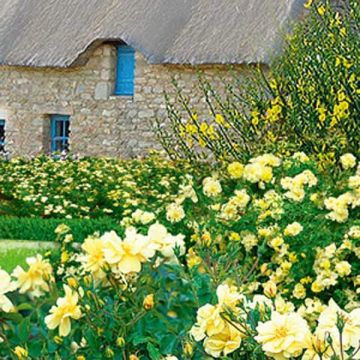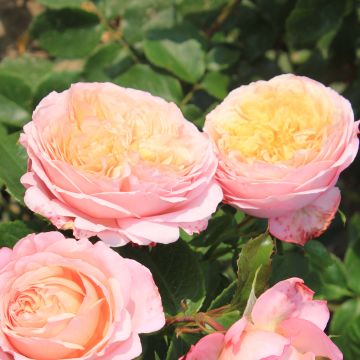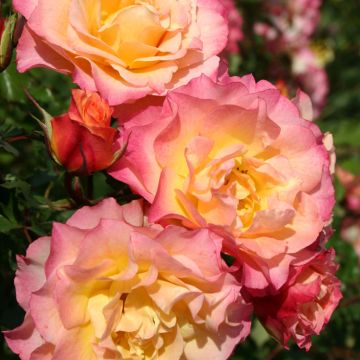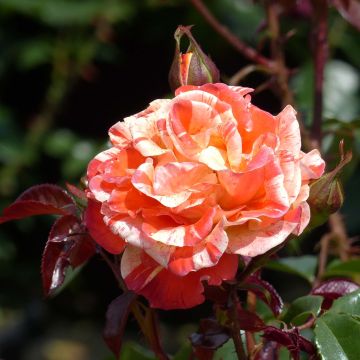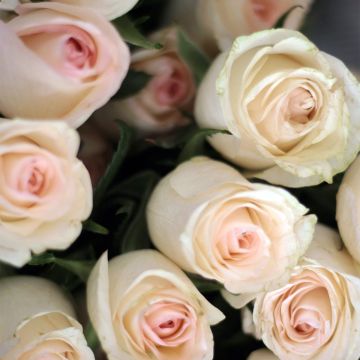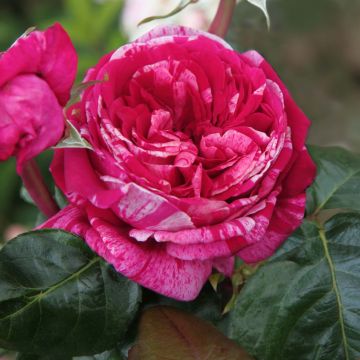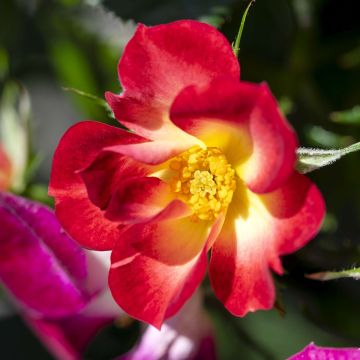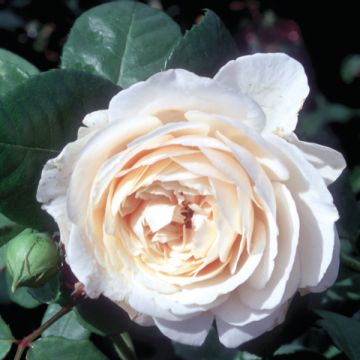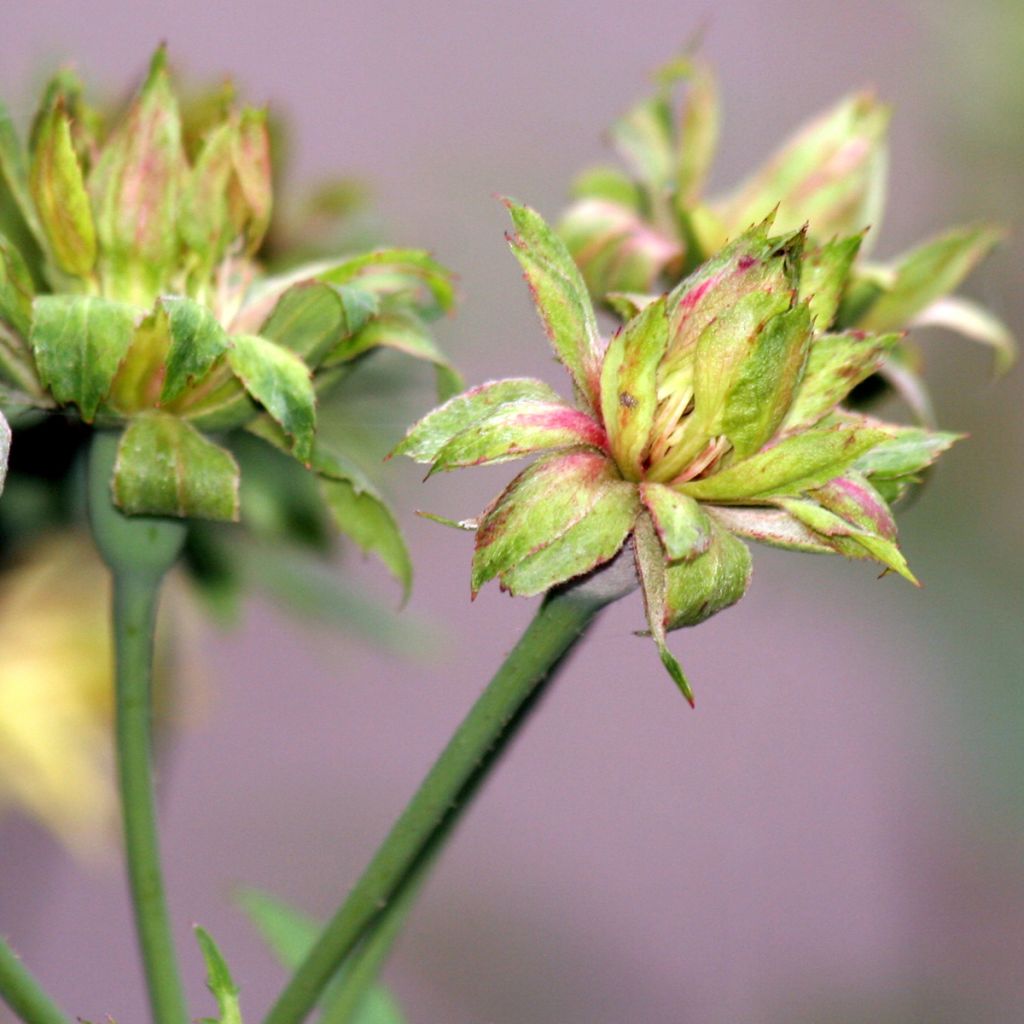

Rosa chinensis Viridiflora - Shrub Rose
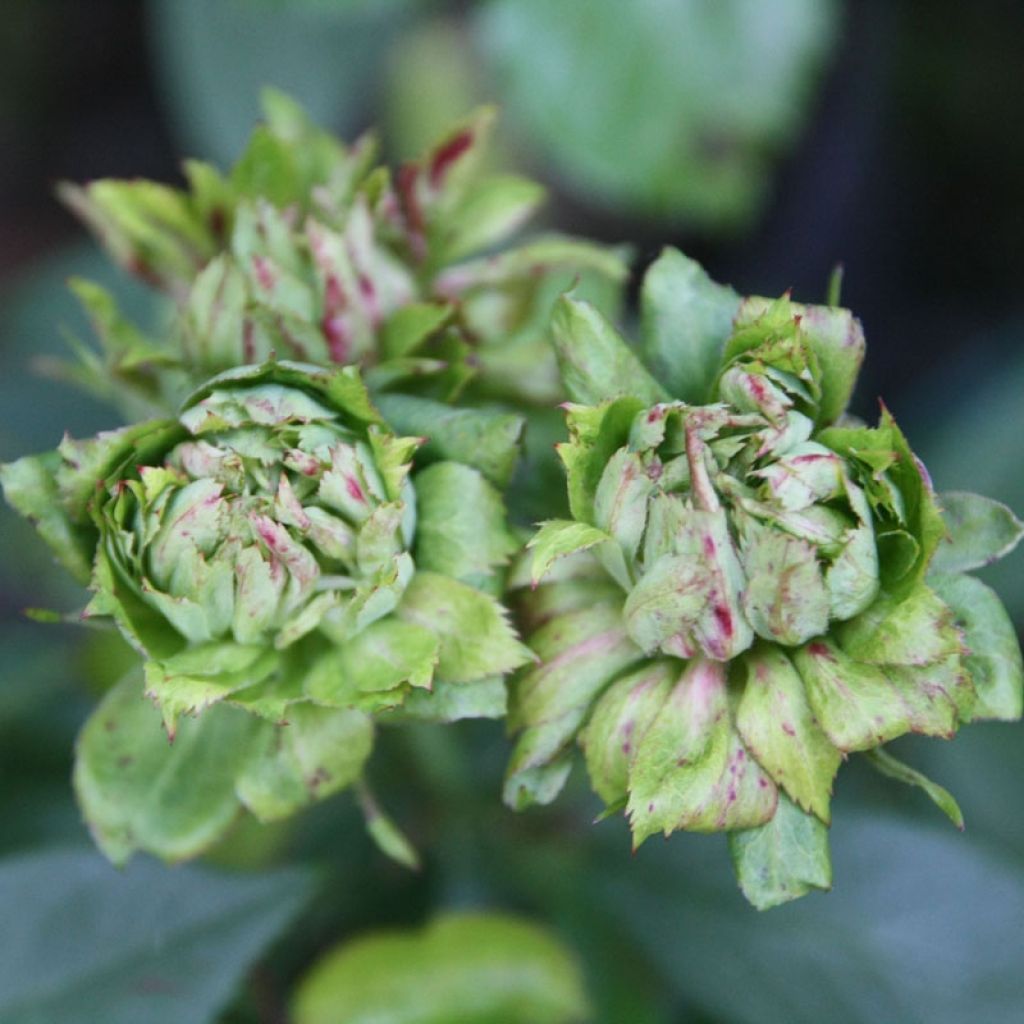

Rosa chinensis Viridiflora - Shrub Rose
Rosa chinensis Viridiflora - Shrub Rose
Rosa chinensis Viridiflora
China Rose, Bengal Rose, Chinese Rose
This item cannot be shipped to the selected country
Delivery charge from €5.90
Delivery charge from €5.90
Delivery to Corse prohibited
More information
Schedule delivery date,
and select date in basket
This plant carries a 24 months recovery warranty
More information
We guarantee the quality of our plants for a full growing cycle, and will replace at our expense any plant that fails to recover under normal climatic and planting conditions.
From €5.90 for pickup delivery and €6.90 for home delivery
Express home delivery from €8.90.
From €5.90 for pickup delivery and €6.90 for home delivery
Express home delivery from €8.90.
Delivery to Corse prohibited: UE law prohibits the import of this plant from mainland France to Corse as part of the fight against Xylella fastidiosa. Please accept our sincere apologies.
More information
Does this plant fit my garden?
Set up your Plantfit profile →
Description
This green-flowered rose, known as Rosa chinensis 'Viridiflora', is a nature's fancy that arrived in England from China in the year 1743. A spontaneous mutation transformed the traditional Bengal roses on this bush with a tangled habit into frizzy pompoms, made up not of petals but of long green bracts streaked with brown-red-pink. Blooming until the end of summer, these discreet roses emit a light, peppery fragrance among beautiful, smooth green foliage free from diseases.
The Chinese Viridiflora rose belongs to the Rosaceae family; it is a mutation of an uncertain or unknown variety of rosa chinensis, theoretically unable to reproduce by seed, as it is asexual, without stamens or pistils. This prickly bush with a somewhat unkempt habit will reach a height of 1 to 1.5 meters (3 to 5 feet) and at least the same width. Its growth is relatively fast. After four years of cultivation, it will already form a beautiful bush. The Viridiflora rose offers a perpetual flowering, often continuous from May to the end of summer. Tiny green-blue oval buds, grouped in bouquets of 3 to 7, give rise to pompom flowers carried by thin stems. They measure 4 cm (2in) in diameter, are double and composed only of 35 pale green leafy bracts, more or less streaked with faded red, with a heart covered in brownish hairs. They turn brown and parchment-like as they disappear. These roses from elsewhere also emit a very slightly perceptible spicy fragrance. The abundant and ornamental foliage, semi-evergreen, comprises very healthy medium-green leaves. This rose adapts to any soil, even poor ones, and tolerates shade.
Many people love old roses because they are the ancestors of modern roses and beautiful additions to gardens. One such rose is the Rosa chinensis 'Viridiflora', which has been around since ancient Chinese times and used to be cultivated only in the Forbidden City. Gardeners have made it possible for this rose to reach us today, and it deserves to be included in rose or naturalistic gardens. It looks best when it is planted in a prominent spot near the house or on a pathway where it can be easily enjoyed. It also pairs well with light flowers like Paniculate Gypsophila, valerian, catmints, bellflowers, garden irises, fennel, caryopteris, gauras, and even lavender. If you want to give it a modern look, you can also pair it with grasses. Lastly, you can add its extravagant pompoms to bouquets with a dominant green colour.
Report an error about the product description
Rosa chinensis Viridiflora - Shrub Rose in pictures
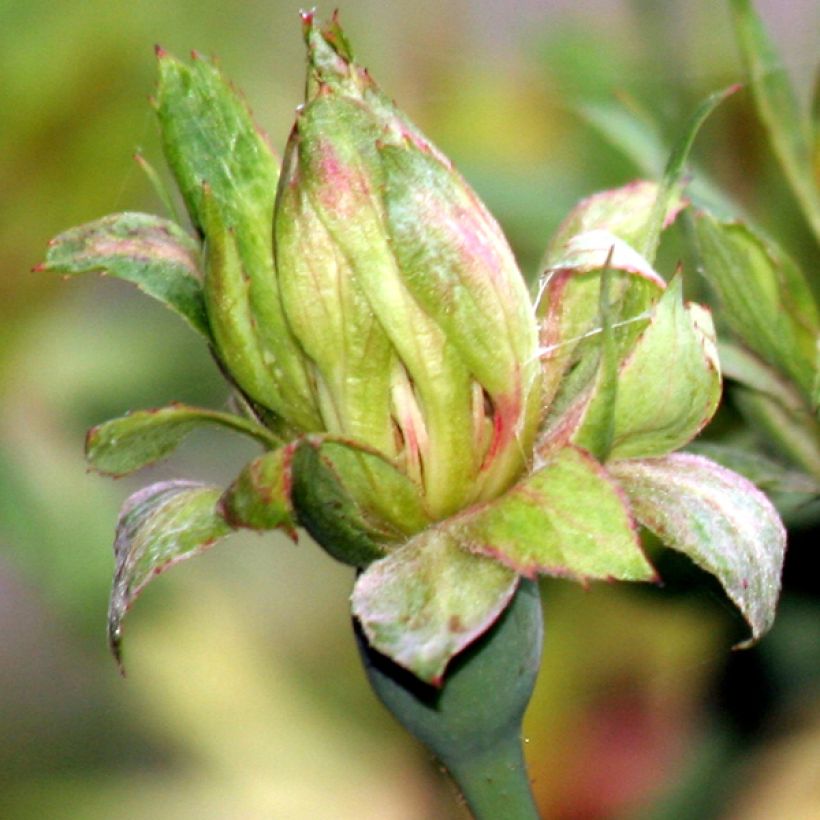

Plant habit
Flowering
Foliage
Botanical data
Rosa
chinensis
Viridiflora
Rosaceae
China Rose, Bengal Rose, Chinese Rose
China
Rosa canina Laxa (4L/5L pot, Wrapped bare root)
Other Roses A to Z
Planting and care
The Viridiflora rose is a hardy plant that can adapt to any type of soil, even poor or sandy, as long as it is planted and cared for properly. It is best planted in well-drained and well-worked ordinary soil and in a location that receives plenty of sunlight. Maintaining a bushy habit is simple: remove faded clusters and the oldest branches (2-3 years old) after winter. This rose is not very hardy but can withstand temperatures below -12 °C (10.4°F). If the branches freeze to the ground after a harsh winter, the bush will regrow from the base in spring. Removing dead wood in winter and pruning faded flowers may be helpful. Light pruning can be done in spring after the risk of frost has passed.
Roses may develop unsightly spots at the end of summer, but this is a natural occurrence and doesn't harm the rose's growth.
Planting period
Intended location
Care
-
, onOrder confirmed
Reply from on Promesse de fleurs
Traditional Roses
Haven't found what you were looking for?
Hardiness is the lowest winter temperature a plant can endure without suffering serious damage or even dying. However, hardiness is affected by location (a sheltered area, such as a patio), protection (winter cover) and soil type (hardiness is improved by well-drained soil).

Photo Sharing Terms & Conditions
In order to encourage gardeners to interact and share their experiences, Promesse de fleurs offers various media enabling content to be uploaded onto its Site - in particular via the ‘Photo sharing’ module.
The User agrees to refrain from:
- Posting any content that is illegal, prejudicial, insulting, racist, inciteful to hatred, revisionist, contrary to public decency, that infringes on privacy or on the privacy rights of third parties, in particular the publicity rights of persons and goods, intellectual property rights, or the right to privacy.
- Submitting content on behalf of a third party;
- Impersonate the identity of a third party and/or publish any personal information about a third party;
In general, the User undertakes to refrain from any unethical behaviour.
All Content (in particular text, comments, files, images, photos, videos, creative works, etc.), which may be subject to property or intellectual property rights, image or other private rights, shall remain the property of the User, subject to the limited rights granted by the terms of the licence granted by Promesse de fleurs as stated below. Users are at liberty to publish or not to publish such Content on the Site, notably via the ‘Photo Sharing’ facility, and accept that this Content shall be made public and freely accessible, notably on the Internet.
Users further acknowledge, undertake to have ,and guarantee that they hold all necessary rights and permissions to publish such material on the Site, in particular with regard to the legislation in force pertaining to any privacy, property, intellectual property, image, or contractual rights, or rights of any other nature. By publishing such Content on the Site, Users acknowledge accepting full liability as publishers of the Content within the meaning of the law, and grant Promesse de fleurs, free of charge, an inclusive, worldwide licence for the said Content for the entire duration of its publication, including all reproduction, representation, up/downloading, displaying, performing, transmission, and storage rights.
Users also grant permission for their name to be linked to the Content and accept that this link may not always be made available.
By engaging in posting material, Users consent to their Content becoming automatically accessible on the Internet, in particular on other sites and/or blogs and/or web pages of the Promesse de fleurs site, including in particular social pages and the Promesse de fleurs catalogue.
Users may secure the removal of entrusted content free of charge by issuing a simple request via our contact form.
The flowering period indicated on our website applies to countries and regions located in USDA zone 8 (France, the United Kingdom, Ireland, the Netherlands, etc.)
It will vary according to where you live:
- In zones 9 to 10 (Italy, Spain, Greece, etc.), flowering will occur about 2 to 4 weeks earlier.
- In zones 6 to 7 (Germany, Poland, Slovenia, and lower mountainous regions), flowering will be delayed by 2 to 3 weeks.
- In zone 5 (Central Europe, Scandinavia), blooming will be delayed by 3 to 5 weeks.
In temperate climates, pruning of spring-flowering shrubs (forsythia, spireas, etc.) should be done just after flowering.
Pruning of summer-flowering shrubs (Indian Lilac, Perovskia, etc.) can be done in winter or spring.
In cold regions as well as with frost-sensitive plants, avoid pruning too early when severe frosts may still occur.
The planting period indicated on our website applies to countries and regions located in USDA zone 8 (France, United Kingdom, Ireland, Netherlands).
It will vary according to where you live:
- In Mediterranean zones (Marseille, Madrid, Milan, etc.), autumn and winter are the best planting periods.
- In continental zones (Strasbourg, Munich, Vienna, etc.), delay planting by 2 to 3 weeks in spring and bring it forward by 2 to 4 weeks in autumn.
- In mountainous regions (the Alps, Pyrenees, Carpathians, etc.), it is best to plant in late spring (May-June) or late summer (August-September).
The harvesting period indicated on our website applies to countries and regions in USDA zone 8 (France, England, Ireland, the Netherlands).
In colder areas (Scandinavia, Poland, Austria...) fruit and vegetable harvests are likely to be delayed by 3-4 weeks.
In warmer areas (Italy, Spain, Greece, etc.), harvesting will probably take place earlier, depending on weather conditions.
The sowing periods indicated on our website apply to countries and regions within USDA Zone 8 (France, UK, Ireland, Netherlands).
In colder areas (Scandinavia, Poland, Austria...), delay any outdoor sowing by 3-4 weeks, or sow under glass.
In warmer climes (Italy, Spain, Greece, etc.), bring outdoor sowing forward by a few weeks.




































